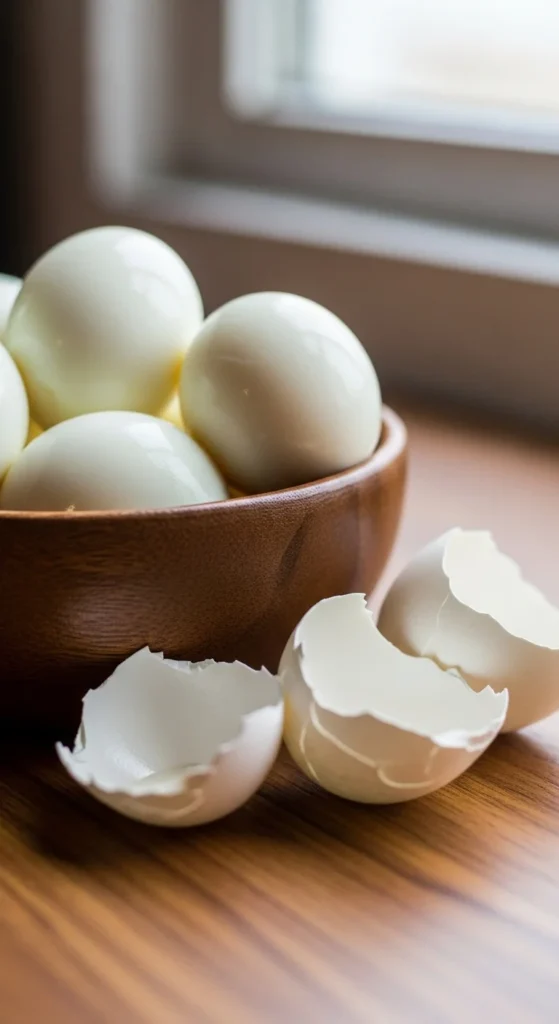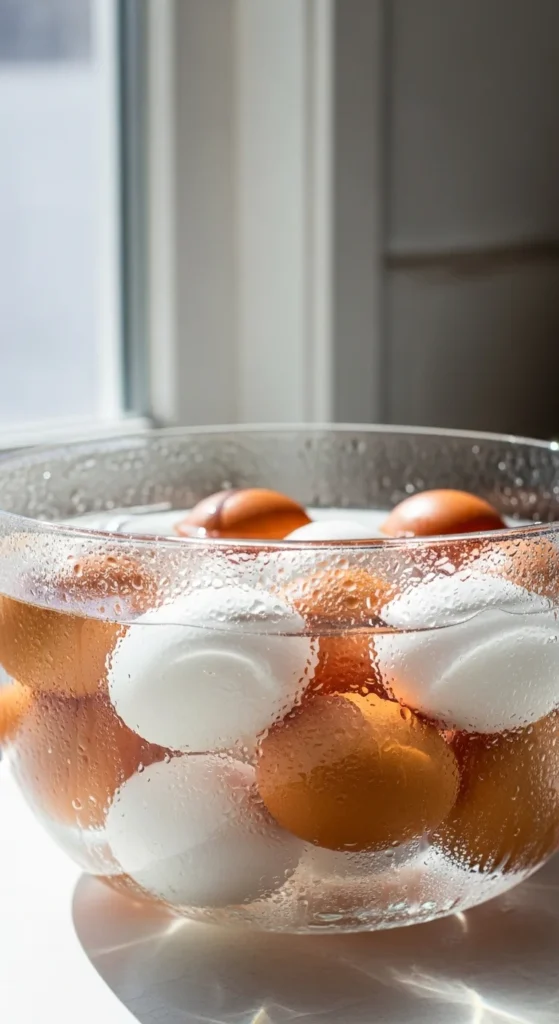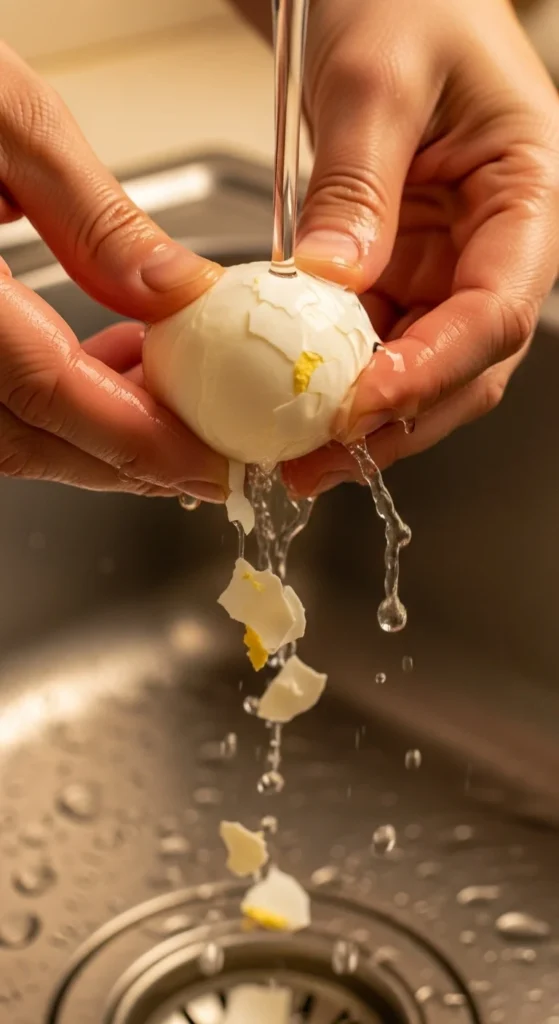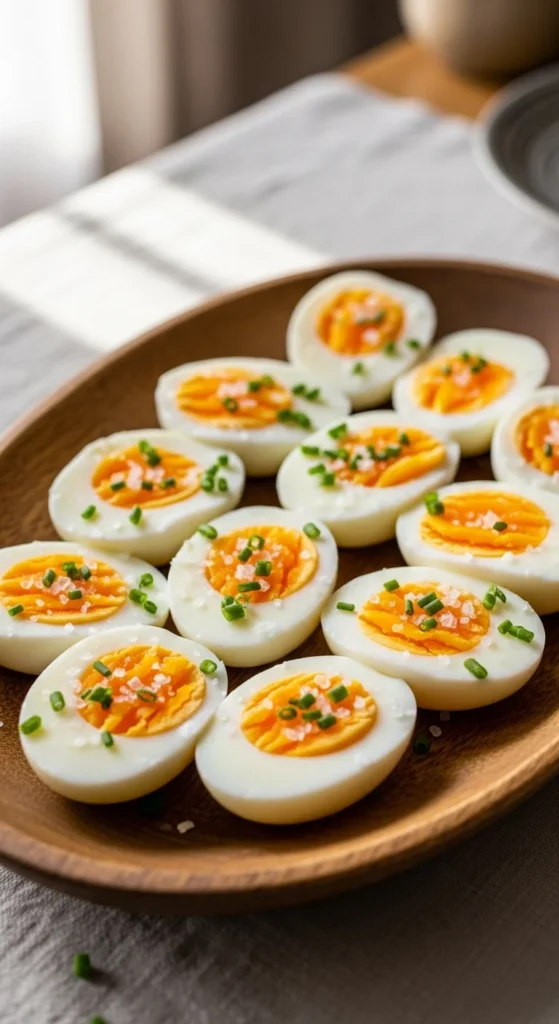We’ve all been there — you boil a batch of eggs, only to spend forever picking off tiny bits of shell while the whites tear apart. Frustrating, right? The good news: getting smooth, easy-to-peel hard boiled eggs isn’t luck — it’s science. With the right water temperature, timing, and cooling technique, you can make perfect eggs every single time.

Why Some Eggs Are Hard to Peel
Eggs are trickier than they look. Fresh eggs, in particular, cling stubbornly to their shells because the pH level of the white is lower — making it stick tightly to the inner membrane. Older eggs have a higher pH, which makes peeling a breeze.
So the secret starts before you even boil:
- Use eggs that are at least 7–10 days old.
- Avoid farm-fresh eggs if you’re after easy peeling.
Now, let’s get into the step-by-step process to achieve smooth shells and perfect yellow centers.
Step 1: Start with Hot Water (Not Cold)
Most people start eggs in cold water — but here’s the twist: starting with boiling water actually makes peeling easier.
When eggs hit hot water, the outer whites cook quickly, pulling slightly away from the shell membrane. That’s what gives you clean, smooth eggs later.
Here’s how to do it:
- Bring a pot of water to a rolling boil.
- Using tongs or a slotted spoon, gently lower the eggs into the boiling water.
- Reduce the heat to a gentle simmer once they’re in.

Step 2: Time It Right
The perfect hard boiled egg is all about timing. You want firm whites and creamy (not chalky) yolks.
Timing guide for large eggs:
- 9 minutes: Slightly soft, jammy yolk.
- 11 minutes: Fully cooked, tender yolk (perfect for salads).
- 13 minutes: Classic firm yolk with no gray ring.
Avoid cooking longer than 13 minutes — overcooked eggs develop that unappetizing gray-green ring around the yolk and a sulfur smell.
Pro tip: Set a timer the second your eggs hit the water — guessing leads to overdone yolks.
Step 3: Cool Them Fast — The Ice Bath Trick
Once your timer goes off, don’t let your eggs sit in hot water. Immediately transfer them to an ice water bath — a bowl filled with ice cubes and cold water.
Let them chill for at least 10 minutes. The shock of cold water stops cooking instantly and helps the egg contract slightly inside the shell, making peeling effortless.
If you skip this step, the eggs will be harder to peel and the whites might stick to the shell.

Step 4: Peel Under Water (It’s a Game Changer)
When it’s time to peel, gently tap each egg on the counter to crack the shell, then roll it lightly to loosen it all over. Start peeling from the wider end, where there’s usually an air pocket.
Now, the secret trick: peel the eggs under running water or in a bowl of water. The water helps separate the shell from the membrane, sliding it off easily.
Bonus: Slightly older eggs and a quick ice bath make this step a total breeze.

Step 5: Store and Use
If you’re not eating them right away, store peeled or unpeeled hard boiled eggs in the refrigerator:
- Unpeeled: Up to 7 days.
- Peeled: Store in a sealed container with a damp paper towel to keep them from drying out (use within 3–4 days).
Perfectly peeled hard boiled eggs are incredibly versatile:
- Slice them over avocado toast.
- Chop into egg salad.
- Add to ramen or salads.
- Sprinkle with salt, pepper, and paprika for a quick snack.

Bonus Tip: Try Baking Soda or Steaming
If you want to experiment:
- Add ½ teaspoon baking soda to your boiling water — it raises the pH, helping the shell release more easily.
- Or, steam your eggs instead of boiling. Steam penetrates gently and evenly, and many cooks swear it makes peeling foolproof.
Both methods work wonders for consistent results.
Final Thoughts
Making easy-to-peel hard boiled eggs isn’t about luck — it’s about technique. Start with slightly older eggs, use boiling water, cool fast, and peel under water. You’ll get smooth, beautiful eggs every time — perfect for breakfast, meal prep, or deviled egg platters.




Leave a Reply